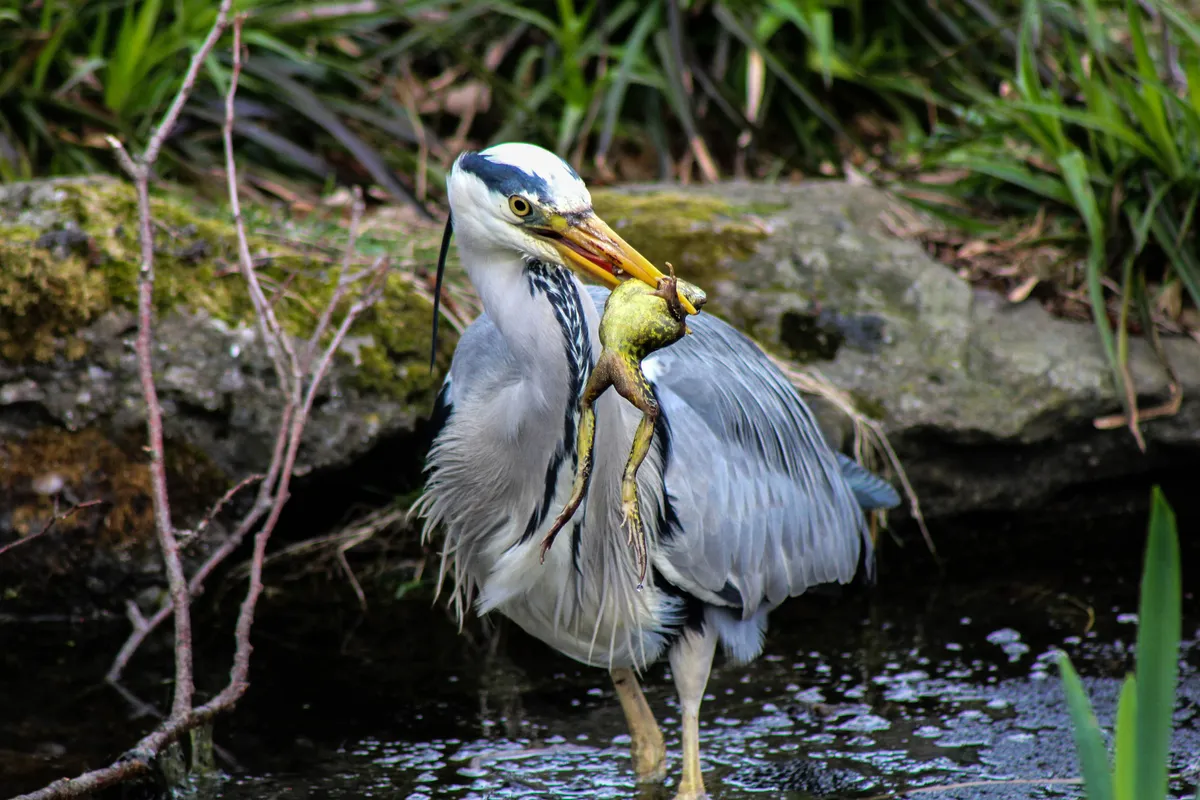Learn more about common frogs with our expert guide by the Amphibian and Reptile Conservation Trust (ARC).
Where do common frogs live?
Possibly our most familiar amphibian, the common frog is distributed throughout Britain and Ireland, and much of northern Europe, they can be found in almost any habitat where there are suitable breeding ponds. In the south of their range, they live mostly in the cooler uplands.
Garden ponds are extremely important for common frogs and many populations in suburban areas depend on them.
Frogs are often found close to fresh water in habitats that remain damp throughout the summer important, as they can breathe through their skin as well as their lungs! Outside of the breeding season they can roam up to 500 metres from a breeding pond.
Find out more about common frogs:
How to identify common frogs
Adults can grow to 9cm (nose to tail). They are generally a shade of olive-green or brown, with a dark patch (or 'mask') behind the eyes. Frogs often have bands of darker striping on the back legs.
Many individuals have irregular dark markings on the back but colouration is extremely variable: yellow, pink, red, orange and black individuals are often reported.

What do common frogs eat?
Common frogs are carnivores so feed on a variety of invertebrate prey including slugs and snails which makes them especially popular with gardeners.
Despite their wide mouths, frogs drink by absorbing water through their skin and swallow using their eyes – they retract them into the head to help push food down their throats. When they moult, they usually eat the skin as it is a valuable source of nutrition!
What eats common frogs?
Frogs make attractive meals for a vast array of wildlife, so they are vulnerable to predators on the ground, underwater and from above.
Their predators include small mammals, lizards and snakes, water shrews, otters and birds such as herons.

Do common frogs lay eggs?
Male frogs make a low purring sound in the breeding season to attract females, which are largely silent. Their spawn (group of eggs) is laid in freshwater in clumps.
Please note that external videos may contain ads:
Common frogs mating. © Jack Perks Photography
Please note that external videos may contain ads:
Common frogs calling and spawning. © ARC
Frogs in parts of Cornwall may breed as early as November, though spring is more usual for the rest of the country.
Tadpoles generally take up to sixteen weeks to grow back legs, then front legs before they metamorphose into tiny froglets, ready to leave the water in early summer (often June, but in some ponds this may be as late as September).
Please note that external videos may contain ads:
5 second clip of recently hatched common frog tadpoles. © ARC
'Mature' tadpoles are faintly speckled with a gold/brown colouration which distinguishes them from the black tadpoles of the common toad. They are eaten by a range of aquatic animals, including dragonfly larvae and newts.
Do common frogs hibernate?
Common frogs hibernate during the winter in pond mud or under piles of rotting leaves, logs or stones.
What threats do common frogs face?
Some say the common frog, our most familiar amphibian, is no longer quite so common, due to shrinking habitats and man-made developments, lack of habitat management and disease.
In Great Britain and Northern Ireland, the common frog (and its spawn) is therefore protected by law from trade and sale.
Garden ponds are increasingly important for common frogs and many populations in suburban areas depend on them. These help to compensate for losses in the UK countryside, where ponds have decreased by a third in the last century to under 500,000.
What can be done to help common frogs?
You don’t need to be a professional ecologist to help our frogs. By taking some simple steps you can make sure your garden pond is amphibian-friendly: create gently sloping sides so frogs can move easily between water and land, use a mix of native water-plants and have a deeper area – at least 60cm – in the centre so that frogs can sit out icy spells at the bottom.
If you don’t have space for a pond, no problem – frogs can still use your garden to rest and feed. Garden ponds will also attract newts and a host of other wildlife!
Amphibian and Reptile Conservation Trust (ARC) is a wildlife charity committed to conserving amphibians and reptiles, and saving the disappearing habitats on which they depend.
Find out about amphibians and reptiles in your garden and how to build a garden pond, and how to manage habitats for natterjack toads, amphibians and other reptiles on the ARC website.
Main image: Common frog and frogspawn. © Brian Mckay Photography/Getty
